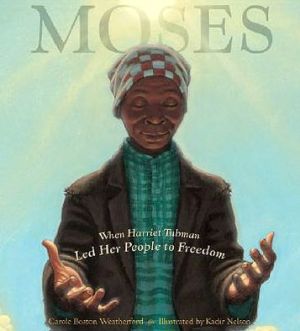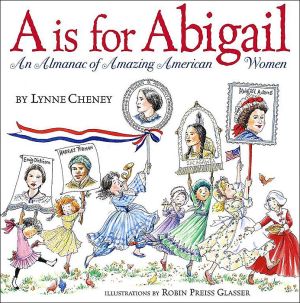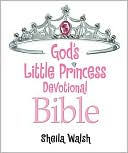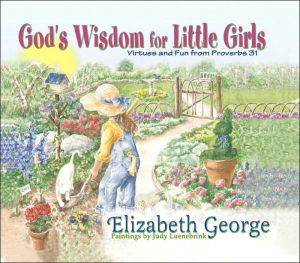Moses: When Harriet Tubman Led Her People to Freedom
This poetic book is a resounding tribute to Tubman's strength, humility, and devotion. With proper reverence, Weatherford and Nelson do justice to the woman who, long ago, earned over and over the name Moses.\ \ Winner of the 2007 Coretta Scott King Award for Illustration\
Search in google:
This poetic book is a resounding tribute to Tubman's strength, humility, and devotion. With proper reverence, Weatherford and Nelson do justice to the woman who, long ago, earned over and over the name Moses.Publishers WeeklyIn this gorgeous, poetic picture book, Weatherford (The Sound that Jazz Makes) depicts Harriet Tubman's initial escape from slavery and her mission to lead others to freedom as divinely inspired, and achieved by steadfast faith and prayer. The author frames the text as an ongoing dialogue between Tubman and God, inserting narration to move the action along. On the eve of her being sold and torn from her family, Tubman prays in her despair. In response, "God speaks in a whip-poor-will's song. `I set the North Star in the heavens and I mean for you to be free.' " The twinkling star encourages Tubman: "My mind is made up. Tomorrow, I flee." The book's elegant design clearly delineates these elements Harriet's words in italic, God's calming words in all caps drifting across the pages, the narrator's words in roman typeface and makes this read like a wholly engrossing dramatic play. Nelson's (He's Got the Whole World in His Hands) finely rendered oil and watercolor paintings, many set in the rural inky darkness of night, give his protagonist a vibrant, larger-than-life presence, befitting a woman who became known as the Moses of her people. His rugged backdrops and intense portraits convey all the emotion of Tubman's monumental mission. A foreword introduces the concept of slavery for children and an author's note includes a brief biography of Tubman. Ages 5-8. (Sept.) Copyright 2006 Reed Business Information.
\ Publishers WeeklyIn this gorgeous, poetic picture book, Weatherford (The Sound that Jazz Makes) depicts Harriet Tubman's initial escape from slavery and her mission to lead others to freedom as divinely inspired, and achieved by steadfast faith and prayer. The author frames the text as an ongoing dialogue between Tubman and God, inserting narration to move the action along. On the eve of her being sold and torn from her family, Tubman prays in her despair. In response, "God speaks in a whip-poor-will's song. `I set the North Star in the heavens and I mean for you to be free.' " The twinkling star encourages Tubman: "My mind is made up. Tomorrow, I flee." The book's elegant design clearly delineates these elements Harriet's words in italic, God's calming words in all caps drifting across the pages, the narrator's words in roman typeface and makes this read like a wholly engrossing dramatic play. Nelson's (He's Got the Whole World in His Hands) finely rendered oil and watercolor paintings, many set in the rural inky darkness of night, give his protagonist a vibrant, larger-than-life presence, befitting a woman who became known as the Moses of her people. His rugged backdrops and intense portraits convey all the emotion of Tubman's monumental mission. A foreword introduces the concept of slavery for children and an author's note includes a brief biography of Tubman. Ages 5-8. (Sept.) Copyright 2006 Reed Business Information.\ \ \ \ \ Children's Literature\ - Marilyn Courtot\ The last book I read about Harriet Tubman was Minty: A Story of Young Harriet Tubman by Alan Schroeder with pictures by Jerry Pinkney. It was a superb book and won many honors and awards. Weatherford picks up the story with Harriet as an adult slave who is married but still burns with the desire for freedom. The character of Harriet, her strength and willingness to sacrifice everything to be free is deeply intertwined with her faith in God. She talks to God and it is her faith and belief that keep her going through the arduous walk to freedom. The design of the book is quite remarkable. The story that tells of her escape appears in a normal font. The words that she hears from God are all in capital letters in a much larger font. There is a continuous dialogue or conversation with the Almighty. Many of the pictures are dark since her escape and travels took place at night and often her face and body reflect the despair and physical exhaustion that are part of her journey. Once she reaches a safe house the sky lightens and they parallel the hope and trust that others will help Harriet along the way. Again when she reaches freedom in Philadelphia, the sun truly shines. With her head still held high, but eyes closed in reverence, peace is reflected through her uplifted hands to clearly shown the end of this part of her journey. The story doesn't end here. Not content to be free herself, Harriet learns to be a conductor on the Underground Railroad and makes many harrowing trips back south to lead others to freedom. She becomes a Moses to her people. It is a stunning marriage of text and illustrations and a story that should inspire all.\ \ \ School Library JournalGr 2-5-Tubman's religious faith drives this handsome, poetic account of her escape to freedom and role in the Underground Railroad. The story begins with Tubman addressing God on a summer night as she is about to be sold south from the Maryland plantation where she and her husband live: "I am Your child, Lord; yet Master owns me,/drives me like a mule." In resounding bold text, God tells her He means for her to be free. The story is sketched between passages of prayerful dialogue that keep Tubman from giving up and eventually call upon her to be "the Moses of [her] people." Deep scenes of night fill many double pages as the dramatic paintings follow her tortuous journey, arrival in Philadelphia, and later trip to guide others. Shifting perspectives and subtle details, such as shadowy forest animals guarding her while she sleeps, underscore the narrative's spirituality. Whether filled with apprehension, determination, or serenity, Tubman's beautifully furrowed face is expressive and entrancing. A foreword briefly explains the practice of slavery and an appended note outlines Tubman's life. The words and pictures create a potent sense of the harsh life of slavery, the fearsome escape, and one woman's unwavering belief in God.-Margaret Bush, Simmons College, Boston Copyright 2006 Reed Business Information.\ \ \ \ \ Kirkus ReviewsIn elegant free verse, Weatherford imagines Tubman's remarkable escape from slavery and her role in guiding hundreds to freedom. Diverse typography braids three distinct narrative strands. White or black type delivers the third-person immediacy of Harriet's journey: "At nightfall, Harriet climbs into a wagon, / and the farmer covers her with blankets. / As the wagon wobbles along, Harriet worries that it is heading to jail." Larger, italic type telegraphs the devout Harriet's prayerful dialogue with God: "Shall I leap, Lord?" God's responses to her beseeching questions garner capitalized letters in warm grays. Nelson's double-page, full-bleed paintings illuminate both the dire physical and transcendent spiritual journey. At night, the moon lights Harriet's care-wracked face below a deep teal, star-pricked sky. By day, she disappears: A distant safe farm appears under a wan blue sky; a wagon transporting the hidden Harriet silhouettes against a golden sunset. Unique perspective and cropping reveal Tubman's heroism. Reaching Philadelphia, she's haloed in sunlight. Embracing her role as conductor, Harriet's face, eyes on the journey ahead, fairly bursts the picture plane against a blazing blue sky. Transcendent. (foreword, author's note) (Picture book. 5-9)\ \







